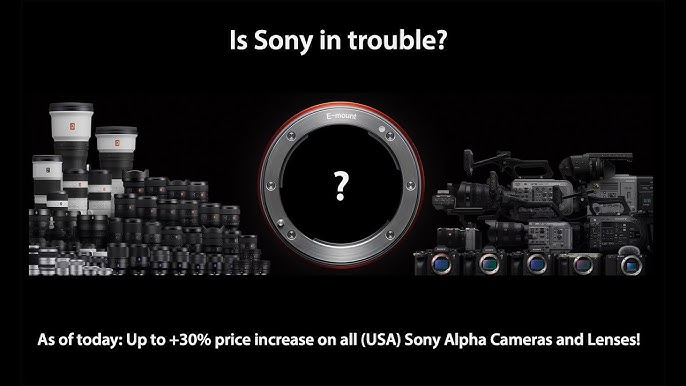Warning of Rising US Tariffs Threatens Global Camera Market
The temporary ten percent trade tariff put in place by the US is nearing its expiration, with implications that could affect global relations, particularly with Japan. The US President has issueed a warning, hinting at a potential rise in tariff rates from the coming August. A large portion of the global camera market is based in Japan, making this development a potential catalyst in the hike of camera and lens prices in the US.
On the 7th of July, the US President communicated this decision through letters addressed to Japan, Malaysia, and a few other nations. He informed these countries of the rise in the tariff on imported goods to 25 percent, effective from the start of August. The difference is minimal when compared to the pre-existing 24 percent tariff on Japanese products, announced previously in April, but it stands in marked contrast to the temporary 10 percent pause on tariffs imposed on most countries.
Some observers perceive this move as a further intensification in the landscape of global trade disagreements. However, according to White House Press Secretary Karoline Leavitt, an order to extend the current 10 percent pause until August has been planned by the President.
The trading rapport between the US and Japan has been years in the making. After meticulous examination of this relationship, the US leadership has decided to shift away from the consistent trade deficits, attributed to Japan’s tariff and non-tariff policies, as well as trade barriers.
The US President lamented the lack of reciprocal respect in the trading relationship with the Japanese Prime Minister Shigeru Ishiba, in a correspondence. He detailed a new policy, stating that from August 1, 2025, a flat 25% Tariff will be implemented on all Japanese products imported into the United States, excluding sectoral tariffs.
Additionally, the letter proposed a countermeasure if Japan decides to impose higher tariffs. The US, in that scenario, would levy an additional 25 percent on top of the augmented tariff. However, there’s a possibility for modification in these rates, which was left open-ended in the President’s letter.
The letter insinuated a readiness to revise the tariff conditions, provided Japan opens its currently closed trading markets to the US. Furthermore, if Japan manages to eliminate its existing tariff and non-tariff barriers and policies, there might be a consideration for adjusting the proposed tariff hike.
This new development could aid in maintaining stable prices for cameras within the US up until August. Yet, if an agreement isn’t reached between the two countries, it’s plausible that the brands might confront elevated costs that may get transferred to the consumers. Camera costs have already been affected by the introduction of these reciprocal tariffs from the US, with brands like Canon, Nikon, Sony, Sigma, and Leica among the ones increasing their prices.
Tariffs are determined based on the declared value as opposed to the retail value, and because of this, many price hikes have been marginally lower than the interim 10 percent reciprocal tariff rate.
Japan plays a pivotal role in the arena of camera technology, serving as the base of operations for key brands such as Canon, Nikon, Sony, Fujifilm, among others. Some of these companies also have manufacturing units set up in other countries, but Canon, Nikon, Fujifilm, and Sigma still produce a good deal of their products in Japan.
In addition to Japan, the US President has written a similar letter to Malaysia, announcing the increase in the tariff from the originally set 24 percent to 25 percent starting August. Several models of Canon and Panasonic cameras are made in Malaysia.
The potential escalation of the trade discord is a development to watch closely for photographers worldwide. This is due to the impact these trade policies could have on countries integral to the photography industry, such as China, Germany, Thailand, and Vietnam.


